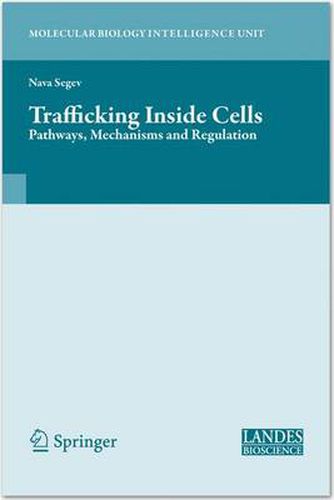Readings Newsletter
Become a Readings Member to make your shopping experience even easier.
Sign in or sign up for free!
You’re not far away from qualifying for FREE standard shipping within Australia
You’ve qualified for FREE standard shipping within Australia
The cart is loading…






This title is printed to order. This book may have been self-published. If so, we cannot guarantee the quality of the content. In the main most books will have gone through the editing process however some may not. We therefore suggest that you be aware of this before ordering this book. If in doubt check either the author or publisher’s details as we are unable to accept any returns unless they are faulty. Please contact us if you have any questions.
The SecretoryPathway The transport ofproteins and lipids from their site ofsynthesis at the endoplasmic reticu- lum (ER) to the cellsurface ismediated by the secretory pathway and isan essential process in eukaryotic organisms. A great variety ofmolecules are extruded from cellsby the action ofthe secretory pathway, including extracellular matrix components that provide the foundation for constructing tissuesand organs. Moreover, this pathway playsa major role in the biogenesisof the plasma membraneand itsexpansion before celldivision. Therefore, withoutsecretion there would be no cells,tissuesor organs, and so it issafeto saythat we oweourvery existence to the secretory pathway. To understand the process ofsecretion we must learn about the organelles that compose the secretory pathway; the ER and Golgi apparatus, and the transport vesicles these or- ganelles produce. The membrane ofthese organelles is primarily synthesized and assembled at the ER but with contributions from mitochondria (phosphatidylethanolamine) and the Golgi apparatus (sphingolipids). Newly synthesized proteins destined for secretion gain en- try into the secretory pathway by translocation across the ER membrane. This translocation apparatus also integrates proteins into the membrane and establishes their topology with respect to the lipid bilayer (seeChapter 7). Many secretory proteins are covalently modified with oligosaccharides to produce glycoproteins, a biosynthetic process initiated in the ER and continued in the Golgi apparatus. Once proteins are properly folded and modified in the ER, they are allowed to leave and are ushered into COPlI-coated carrier vesiclesforming at specific exit sites (see Chapters 1 and 8).
$9.00 standard shipping within Australia
FREE standard shipping within Australia for orders over $100.00
Express & International shipping calculated at checkout
This title is printed to order. This book may have been self-published. If so, we cannot guarantee the quality of the content. In the main most books will have gone through the editing process however some may not. We therefore suggest that you be aware of this before ordering this book. If in doubt check either the author or publisher’s details as we are unable to accept any returns unless they are faulty. Please contact us if you have any questions.
The SecretoryPathway The transport ofproteins and lipids from their site ofsynthesis at the endoplasmic reticu- lum (ER) to the cellsurface ismediated by the secretory pathway and isan essential process in eukaryotic organisms. A great variety ofmolecules are extruded from cellsby the action ofthe secretory pathway, including extracellular matrix components that provide the foundation for constructing tissuesand organs. Moreover, this pathway playsa major role in the biogenesisof the plasma membraneand itsexpansion before celldivision. Therefore, withoutsecretion there would be no cells,tissuesor organs, and so it issafeto saythat we oweourvery existence to the secretory pathway. To understand the process ofsecretion we must learn about the organelles that compose the secretory pathway; the ER and Golgi apparatus, and the transport vesicles these or- ganelles produce. The membrane ofthese organelles is primarily synthesized and assembled at the ER but with contributions from mitochondria (phosphatidylethanolamine) and the Golgi apparatus (sphingolipids). Newly synthesized proteins destined for secretion gain en- try into the secretory pathway by translocation across the ER membrane. This translocation apparatus also integrates proteins into the membrane and establishes their topology with respect to the lipid bilayer (seeChapter 7). Many secretory proteins are covalently modified with oligosaccharides to produce glycoproteins, a biosynthetic process initiated in the ER and continued in the Golgi apparatus. Once proteins are properly folded and modified in the ER, they are allowed to leave and are ushered into COPlI-coated carrier vesiclesforming at specific exit sites (see Chapters 1 and 8).